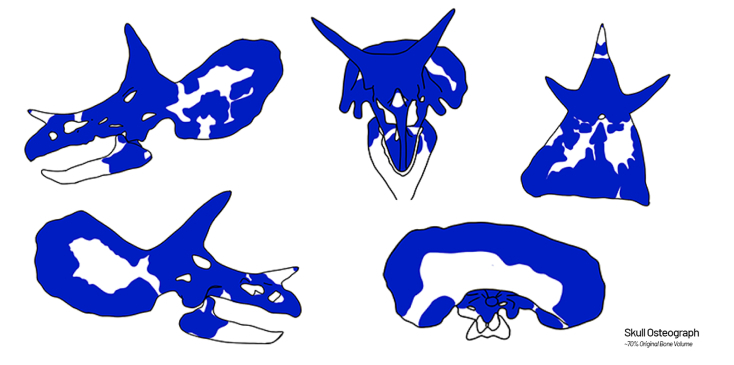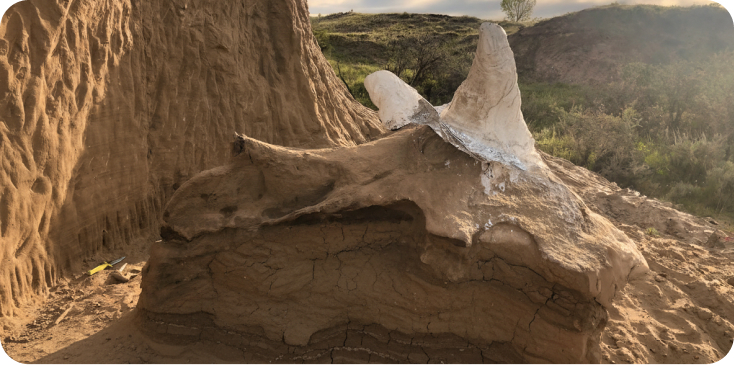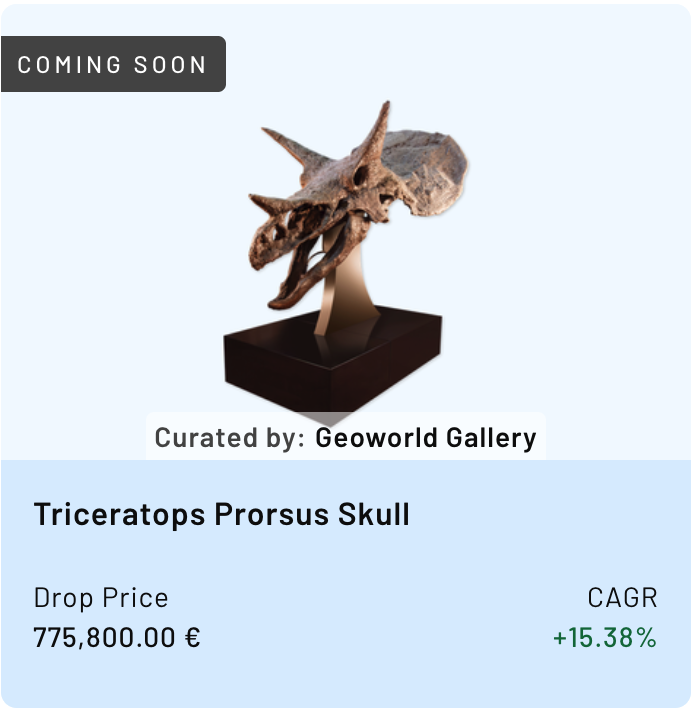
It started with a horn. In the heat of Montana, after days of digging, a curved bone on the surface changed everything. Beneath was a Triceratops skull almost two meters long, buried for 67 million years and preserved with its horns, beak, and even teeth.
Today, that skull is no longer underground and will soon be available for investment.
We spoke with Stefano Piccini, the world-renowned paleontologist behind the excavation, about all the details to the discovery of our upcoming drop: the Triceratops prorsus skull,our biggest asset ever.
Stefano: The Triceratops lived at the very end of the Cretaceous period, at the same time as T. rex, literally days before the asteroid hit the Earth, around 67 million years ago. So this is one of the last dinosaurs that ever existed.
Its anatomy is extremely unique. The skull is enormous, and the horns and frill are very characteristic. Even though T. rex is the most famous dinosaur, if there’s one animal that could stand up to it, it’s Triceratops. The skull could make up one third of the animal’s total body weight, and the horns could reach up to one meter. It’s one of the most impressive dinosaurs we know.
Stefano: We found this specimen in Fallon County, Montana — the Hell Creek Formation, where most T. rex and Triceratops fossils are discovered. We had been prospecting for several days. It’s not an easy environment; the days get very hot. At first, we only saw bone fragments on the surface, that’s always the first sign. Once we began excavating and removing sediment, more bones appeared. Looking at the structure, we recognized it was part of a horn. In Hell Creek, horns of that shape and size typically belong to Triceratops. It was very exciting for our team. A find like this is not common.

Stefano: It was a long process. The skull was embedded in a canyon-like setting, with a lot of overburden (rock and sediment) above it. Part of one brow horn had broken, but we found the missing fragments nearby and kept them. During the summer heat, the bones are very fragile, so we had to stabilize them immediately with special glues.
Most of the work is done entirely by hand. We use scrapers, knives, small picks, and shovels. Heavy machinery is only used at the beginning to remove the overburden. Once we reach the fossil, everything becomes delicate work.
In the lab, it becomes like assembling a puzzle. We clean each fragment individually, lay them out, and match them according to the anatomy of a Triceratops skull. Some pieces fit together immediately, others don’t. Sometimes pieces are missing. After assembling what we have, we use plaster and epoxy resins to fill the gaps and reinforce the structure.

Stefano: This skull is from an adult Triceratops, so it is impressively large, almost 2 meters long. Most of its character comes from the horns and the frill. The brow horns are very important to identify the species. In Hell Creek, we mainly have Triceratops horridus and Triceratops prorsus. Horridus has longer, slimmer horns, while prorsus has very thick horns at the base and shorter, more massive horns. This specimen is prorsus, which is why the horns look so heavy and powerful.
Finding a skull with the horns preserved, especially the tips, is very rare. Horns are often missing or heavily damaged because they are the first parts exposed and destroyed during erosion. In this case, both hornsare original. Even the front beak is preserved, and part of the maxilla still has teeth. That level of preservation is remarkable.
We are looking at approximately 70% of the original bone in this skull, which is museum-grade preservation. Only minimal restoration was needed. It is extremely hard to find a fossil in such a condition.

Stefano: Historically, museums and institutions were the typical buyers. But that has changed. In recent years, fossils have become very appreciated in the art world. We have a lot of customers who are art dealers or private collectors. Our work is not only the excavation, it’s restoring and mounting them so they are brought back to our time, becoming masterpieces that can be displayed.
The market has also realized that dinosaurs are a great investment. We are now seeing 20 to 30% appreciation every year. T. rex is the most famous one, but Triceratops is also in the top three dinosaur specimens in terms of investment.

Triceratops Prorsus Skull drops December 2025.